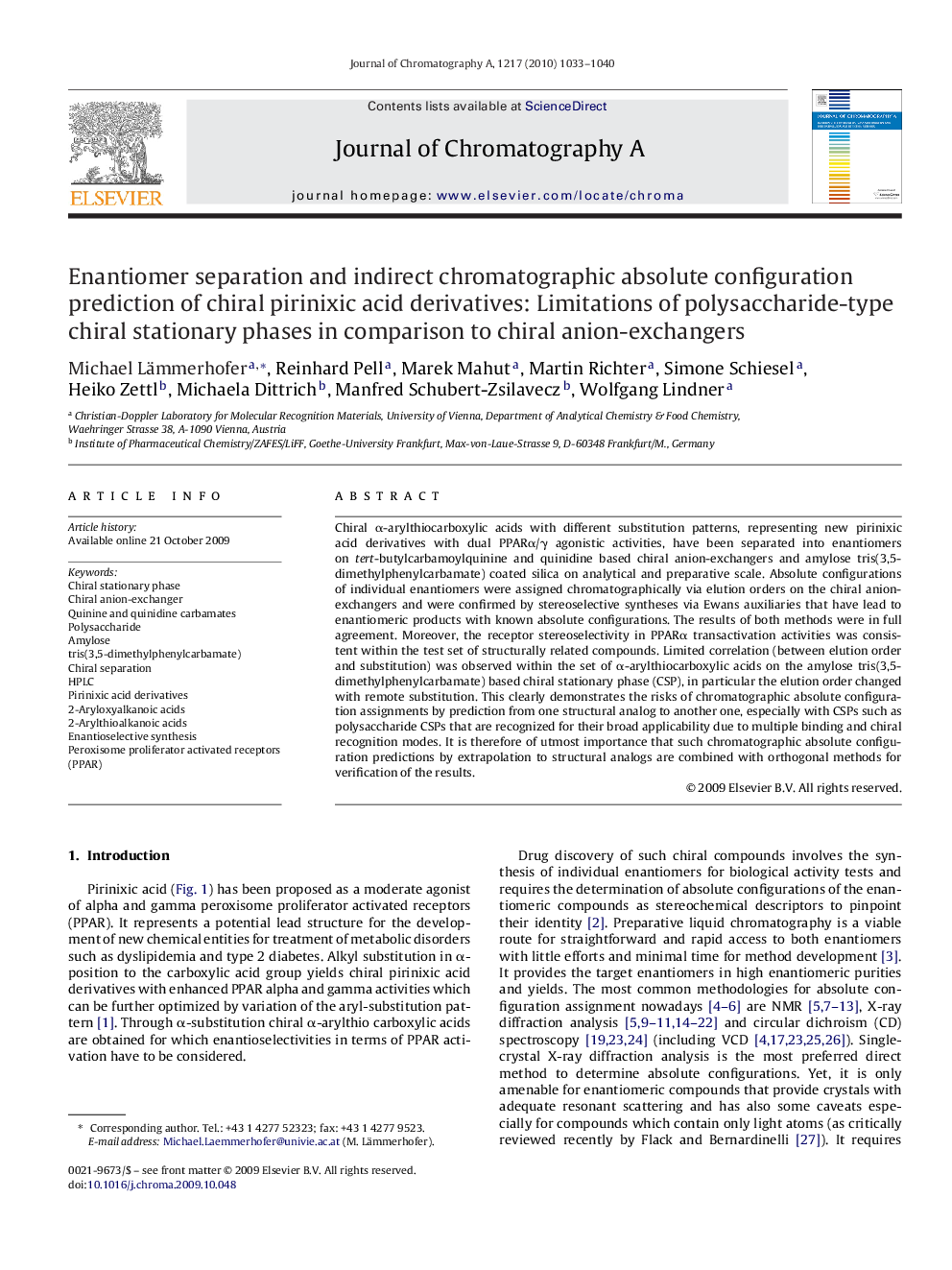| Article ID | Journal | Published Year | Pages | File Type |
|---|---|---|---|---|
| 1203872 | Journal of Chromatography A | 2010 | 8 Pages |
Chiral α-arylthiocarboxylic acids with different substitution patterns, representing new pirinixic acid derivatives with dual PPARα/γ agonistic activities, have been separated into enantiomers on tert-butylcarbamoylquinine and quinidine based chiral anion-exchangers and amylose tris(3,5-dimethylphenylcarbamate) coated silica on analytical and preparative scale. Absolute configurations of individual enantiomers were assigned chromatographically via elution orders on the chiral anion-exchangers and were confirmed by stereoselective syntheses via Ewans auxiliaries that have lead to enantiomeric products with known absolute configurations. The results of both methods were in full agreement. Moreover, the receptor stereoselectivity in PPARα transactivation activities was consistent within the test set of structurally related compounds. Limited correlation (between elution order and substitution) was observed within the set of α-arylthiocarboxylic acids on the amylose tris(3,5-dimethylphenylcarbamate) based chiral stationary phase (CSP), in particular the elution order changed with remote substitution. This clearly demonstrates the risks of chromatographic absolute configuration assignments by prediction from one structural analog to another one, especially with CSPs such as polysaccharide CSPs that are recognized for their broad applicability due to multiple binding and chiral recognition modes. It is therefore of utmost importance that such chromatographic absolute configuration predictions by extrapolation to structural analogs are combined with orthogonal methods for verification of the results.
